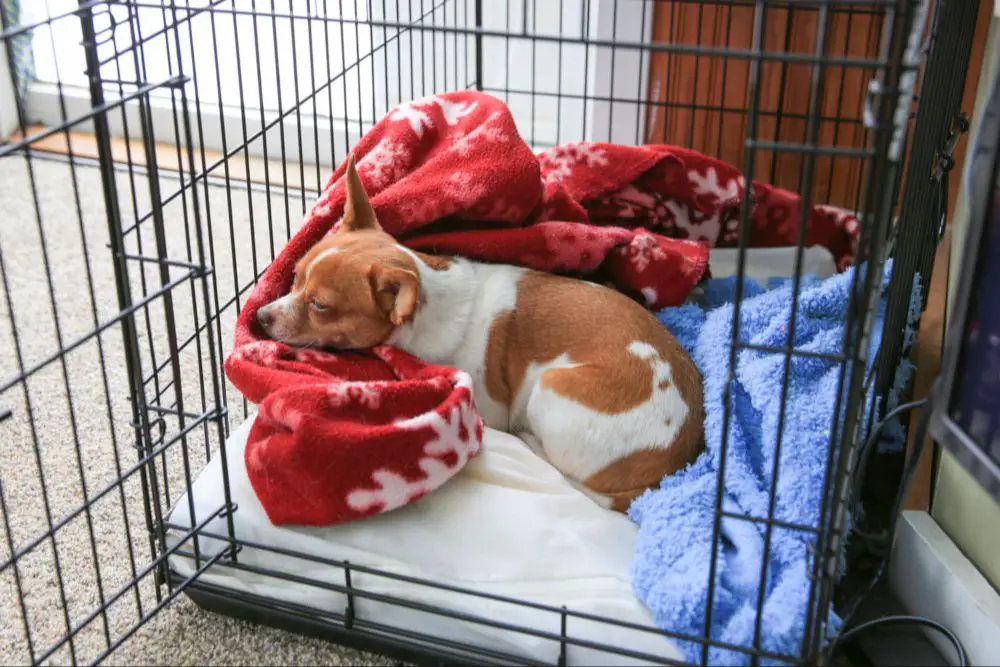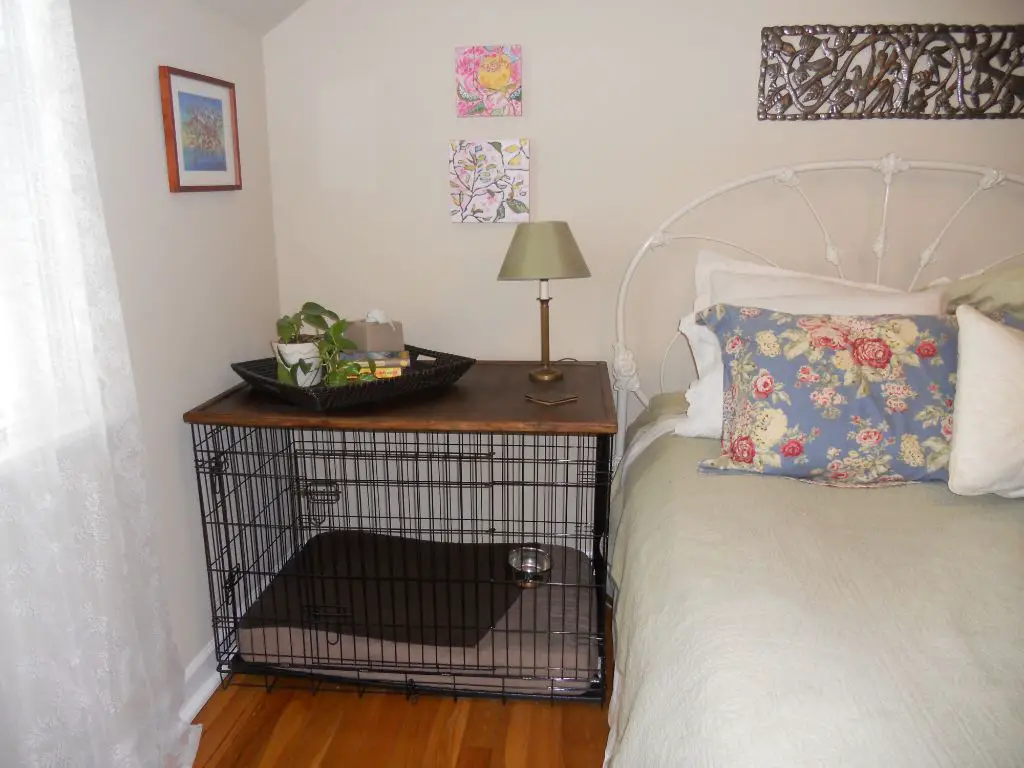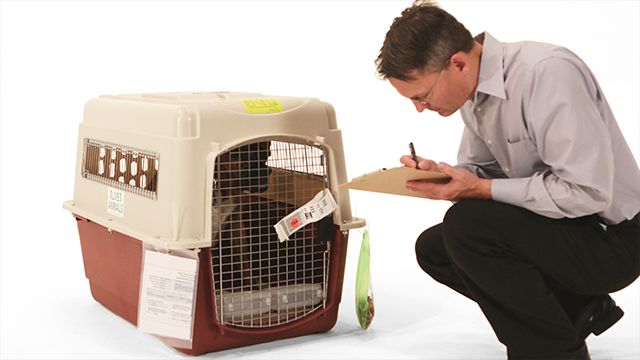Introduction
Crates are commonly used by dog owners in Europe as an effective training tool and safe space for dogs. The practice of crating dogs has its roots in dog shows and field trials where crates were used to transport dogs safely and limit their mobility when necessary. Today, crate training continues to grow in popularity among European dog owners for a variety of reasons.
Crate training takes advantage of a dog’s natural instinct to seek out small dens or enclosed spaces where they feel secure. By providing a properly sized crate with comfortable bedding, owners can create the ideal den-like environment for their dog to relax and sleep. Used correctly, a crate gives dogs their own special retreat and prevents unwanted behaviors like destructive chewing or eliminating in the house when unsupervised.
While crating practices differ across Europe, many owners find value in crate training and incorporating crates into their daily routine. When introduced properly, most dogs learn to see their crate as a safe space and will voluntarily relax inside without signs of stress. This allows owners to focus on work, errands or social engagements while keeping their dog comfortable and secure at home.
Reasons for Crates
There are several reasons Europeans commonly use crates for their dogs, including for house training, confinement, and travel.
Crates can be very helpful for house training puppies or dogs. Since most dogs instinctively avoid soiling in their sleeping area, crating helps teach them to “hold it” until they can be taken outside. The crate’s confined space encourages dogs to wait until their next opportunity to relieve themselves outdoors.
Confinement is another major reason for crating dogs. When left unsupervised, dogs can get into trouble chewing, digging, or destroying household items. A crate provides a safe space to leave dogs when owners are away or unable to supervise. It prevents access to household dangers like electrical cords, poisonous plants, and choking hazards.
Crates are also very useful for travel. They securely contain dogs in vehicles, protecting them and human passengers in the event of a crash or sudden stop. Airlines require dogs to be crated for air travel. Crates provide comforting dens for dogs in unfamiliar, hectic travel environments.
Crate Training Methods
There are several effective methods for acclimating dogs to crates and making the crate a positive place through training. The key is to associate the crate with rewards and make it comfortable rather than scary.
One approach is to place treats and toys inside the crate so the dog voluntarily goes in to explore and retrieve them. Praise and give additional treats when the dog enters on their own. Start with very short crating periods of just a few minutes, praising and rewarding the dog for remaining calm and relaxed.

Another method is feeding the dog their regular meals inside the crate with the door open, so they associate it with something positive. Place a comfortable blanket or bed inside so the crate feels cozy and safe. Some owners will also place an item of clothing with their scent to comfort the dog.
It’s important not to force a dog into a crate or shut the door if they remain highly anxious. Patience and very gradual acclimation while making the crate an enjoyable place will yield the best results. Always use positive reinforcement and treats to shape the desired crating behavior.
Crate Sizes
Determining the correct crate size for a dog is important for their comfort and safety. Here are some tips on choosing an appropriately sized crate:
For puppies, buy a crate that will accommodate their full grown size. Choose a crate that will allow them to stand up, turn around, and lie down comfortably when fully grown. Size up if unsure.
For adult dogs,measure your dog from nose to tail tip while in a natural standing position. Add 2-4 inches for smaller breeds and 4-6 inches for larger breeds. The crate length should match this sizing.
For crate width, measure across your dog’s shoulders and chest. Allow them to sit and stand comfortably without rubbing the sides. Add 2-4 inches of width.
Crate height should allow the dog to sit without their ears touching the top. Measure from floor to top of head when seated and add 2-3 inches.
An oversized crate can lead to accidents. A crate that is too small can be uncomfortable. Take accurate measurements and choose a crate that allows movement without excess room.
Crate Placements
Ideally, crates should be placed in an area that is convenient yet doesn’t isolate the dog completely. Popular crate placement options include:
– Next to the bed in the bedroom. This allows the owner to be near the dog at night.
– In a corner of the living room. The dog can still see family activities.

– In an office or spare room. The crate is out of the way but the dog isn’t too isolated.
– Near a window. Looking outside provides mental stimulation.
– Not totally secluded. It’s best to avoid closets, basements, or far corners of the house.
– Away from high traffic areas. Too much activity can overstimulate some dogs.
– Away from direct heat sources. Proper ventilation prevents overheating.
The right crate location balances owner convenience, supervision, and comfort for the dog’s needs.
Crating Duration
When it comes to how long to crate a dog, there are some general guidelines to follow for puppies and adult dogs.
For puppies, a good rule of thumb is they can be crated for 1 hour for every month of age, up to about 6-8 hours. So for example, a 3 month old puppy should not be crated longer than 3 hours at a time. Puppies under 4 months should also be let out every 2-3 hours to relieve themselves.
For adult dogs 1 year and up, they can typically be crated for up to 8-10 hours, but this depends on the individual dog. Smaller dogs and those prone to separation anxiety may only tolerate shorter crating periods of 4-6 hours. All dogs need potty breaks, so adult dogs should not go longer than 8 hours without a bathroom break.
In general, crating during the day should be limited to no more than what is needed based on the dog owner’s work schedule. Excessively long crating periods daily can lead to boredom, frustration, and loss of housetraining skills.
Crating Regulations
Several European countries have regulations and restrictions regarding crating dogs. The main purpose of these laws is to protect animal welfare and prevent prolonged crating or confinement that could be considered inhumane.

In Sweden, crates are allowed for transport, short-term confinement, and training purposes only. It is illegal to crate a dog for more than 5 hours per day or to use crating as an overnight solution. This law, called “Hundförordningen”, considers crating for over 8 hours to be animal abuse.
Germany also restricts crating to up to 8 hours maximum per day, with longer periods requiring breaks. Crates must allow the dog to exhibit natural behaviors and provide room to stand, sit, lie down, and turn around comfortably.
In the UK, the Animal Welfare Act makes it illegal to confine a dog in an unsuitable living environment that compromises welfare. While specific crating regulations are still under development, best practice recommends limiting crate use to short durations for safety and reducing stress.
Several animal welfare groups also caution that improper or too much crating could constitute a criminal offense under animal cruelty laws. They advise monitoring crated time and providing toys, bedding, water, and potty breaks.
Crating while Home Alone
Crating dogs while home alone is a controversial topic among many European dog owners. There are potential benefits and drawbacks to consider when deciding whether or not to crate a dog while away from home.
On the pro side, crating a dog while alone at home can help reduce separation anxiety, prevent destructive behaviors like chewing furniture or shoes, and keep the dog safe from household dangers like ingesting toxic foods or chemicals. The crate provides a secure space for the dog to relax in, like a den, which can reduce stress.
However, there are also cons to crating while away. Many critics argue that crating is cruel and akin to locking a human child in a small room alone all day. There are concerns about lack of exercise, stimulation, and companionship during long crating periods. Some dogs may experience increased anxiety, boredom, or frustration from being confined.
Overall, the decision depends on the individual dog’s temperament and needs. Crating for short stints of 3-4 hours may be reasonable for some dogs. But crating for 8+ hours while at work is questionable. Interactive toys and periodically hiring a dog walker can help mitigate drawbacks. The best approach involves training the dog to enjoy the crate as a safe space, not forced confinement.
Crating at Night
Crating dogs at night is a common practice among many pet owners in Europe. There are several pros and cons to consider when deciding whether or not to crate a dog overnight.
On the pro side, crating a dog at night can help with housetraining, especially for puppies or newly adopted dogs. The crate prevents accidents around the house while the humans are sleeping. It also provides a sense of security and comfort for dogs who view their crate as a safe den. Crates prevent destructive behaviors like chewing on furniture or shoes while unsupervised at night. They also keep dogs out of potentially dangerous areas like the kitchen or electrical cords. For owners who allow dogs to sleep in their bedroom, crating prevents waking up to doggie kisses or pouncing on the bed.

However, there are also some drawbacks to overnight crating. Some dogs dislike being confined or isolated at night and will bark or whine. Puppies may not be able to hold their bladder the entire night. Senior dogs may need easy access to water, outdoor potty breaks, or pace around. If the crate is too small, dogs can feel cramped. Owners will need to wake up during the night to let the dog out to relieve themselves. Dogs should not be crated for excessively long periods without breaks. If done improperly, crating a dog at night can lead to negative associations with the crate.
Overall, each owner must weigh the pros and cons of nighttime crating based on their individual dog’s age, temperament and housetraining status. With proper training and expectations, crating a dog overnight can be a safe and effective way to manage their schedule and prevent unwanted behaviors.
Conclusion
In conclusion, crating dogs is a common practice across Europe for a variety of reasons. Proper crate training and sizing are essential to making sure dogs are comfortable and safe in their crates. While regulations vary, most recommend crating in moderation and avoiding excessive durations. Crates can provide dogs with a sense of security and independence when used appropriately. They should not be used punitively or for unreasonably long periods of time. With proper precautions, crates can be an effective way to manage certain behaviors and provide dogs a place of their own.